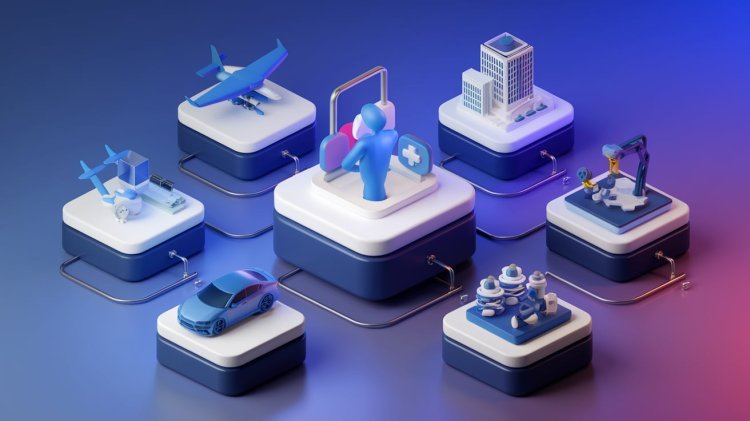Top 5 Industries Benefiting from 3D Printing Services Today
Discover the top 5 industries benefiting from 3D printing services, from healthcare to aerospace. Learn how 3D printing is revolutionizing production, reducing costs, and driving innovation across key sectors.

In recent years, 3D printing services have revolutionized a wide range of industries by offering faster production times, lower costs, and greater design flexibility. Once limited to prototyping, 3D printing is now being used in full-scale manufacturing, creating complex products that were previously impossible or too expensive to produce through traditional methods. Let’s explore the top 5 industries benefiting from 3D printing services today.
1. Healthcare and Medical Industry
The healthcare sector has seen incredible advancements thanks to 3D printing services. From custom prosthetics to surgical tools, the technology is transforming patient care and medical research.
Customized Prosthetics and Implants
One of the most impactful uses of 3D printing in healthcare is the ability to create custom prosthetics and implants. 3D printing enables the creation of personalized, patient-specific solutions, which improve comfort, fit, and functionality. This leads to shorter recovery times and better outcomes for patients.
Medical Equipment and Surgical Guides
3D printing is also being used to manufacture medical devices and surgical instruments. It allows for rapid prototyping of surgical guides that can be customized for each patient, improving the accuracy of complex procedures.
2. Aerospace and Defense
The aerospace and defense industry was an early adopter of 3D printing services due to its need for lightweight, durable, and geometrically complex components. By using 3D printing, this industry has achieved significant benefits in both prototyping and production.
Lightweight Components
Aircraft manufacturers are leveraging 3D printing to produce lightweight components that reduce the overall weight of aircraft, resulting in better fuel efficiency. By replacing heavy metal parts with 3D-printed materials, planes can reduce fuel consumption, lower emissions, and extend their flight range.
Rapid Prototyping for Innovation
Innovation in aerospace requires constant prototyping, and 3D printing services offer a cost-effective way to test new designs quickly. This helps manufacturers create innovative products with shorter lead times and fewer resources.
3. Automotive Industry
The automotive industry is another sector that has embraced 3D printing, using it to enhance vehicle performance, reduce manufacturing costs, and bring customization to the next level.
Prototyping and Design Customization
Car manufacturers use 3D printing to produce prototypes and test new parts quickly. This allows for faster design iterations, enabling manufacturers to perfect designs before full-scale production. Customization has also become more accessible, as manufacturers can 3D print parts tailored to a customer’s specifications.
Spare Parts and Aftermarket Solutions
One major benefit of 3D printing services in the automotive industry is the ability to produce spare parts on demand. This is especially useful for older vehicle models where spare parts may no longer be in production. By printing these parts as needed, manufacturers can reduce inventory costs and keep vehicles operational longer.
4. Fashion and Apparel Industry
Yes, even the fashion industry is tapping into the benefits of 3D printing services. Designers and manufacturers are using the technology to push the boundaries of creativity, sustainability, and production efficiency.
Innovative Design Possibilities
3D printing allows fashion designers to create intricate patterns and complex structures that would be difficult or impossible to achieve through traditional techniques. From high-fashion runway pieces to accessories like jewelry and footwear, designers can bring their boldest visions to life with 3D printing.
Sustainable Production
3D printing also plays a role in sustainable fashion by reducing material waste. Traditional fabric cutting methods result in leftover scraps, but 3D printing services use only the exact amount of material required, leading to a more eco-friendly production process.
5. Architecture and Construction
The architecture and construction industry has embraced 3D printing as a game-changing technology for designing and constructing buildings and infrastructure.
Rapid Prototyping of Architectural Models
Architects use 3D printing to create detailed, scaled models of their designs. This not only speeds up the design process but also allows for greater precision and the ability to make real-time adjustments before construction begins. The use of 3D printing services in architecture leads to better collaboration between architects, engineers, and clients.
Large-Scale Construction Projects
3D printing isn’t limited to small models. Construction firms are now using large-scale 3D printers to create entire building components, reducing labor costs and construction times. Some projects have even printed entire homes, showcasing the potential for affordable and sustainable housing solutions.
Conclusion
The versatility and transformative power of 3D printing services make it a valuable asset in a variety of industries. From healthcare innovations to sustainable fashion and aerospace advancements, 3D printing continues to push the boundaries of what’s possible. As technology advances, we can expect even more industries to benefit from the cost-saving, time-efficient, and creative possibilities offered by 3D printing services.
What's Your Reaction?














